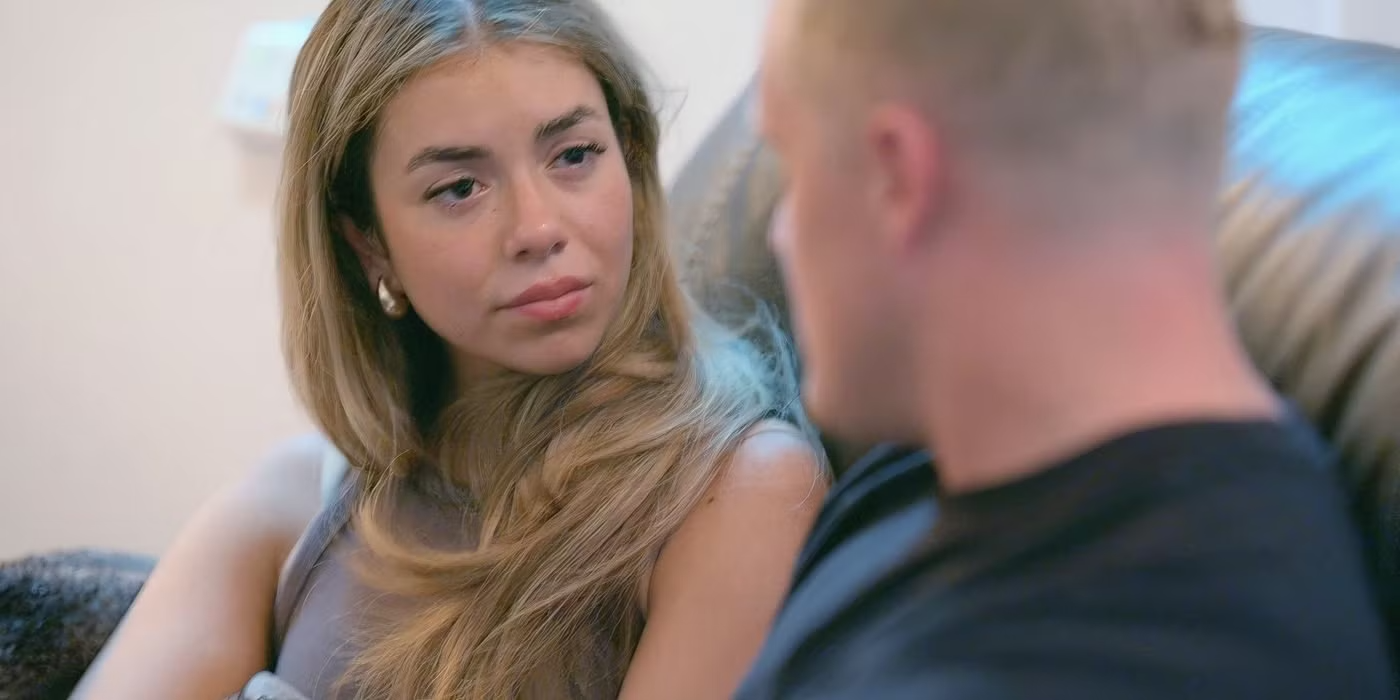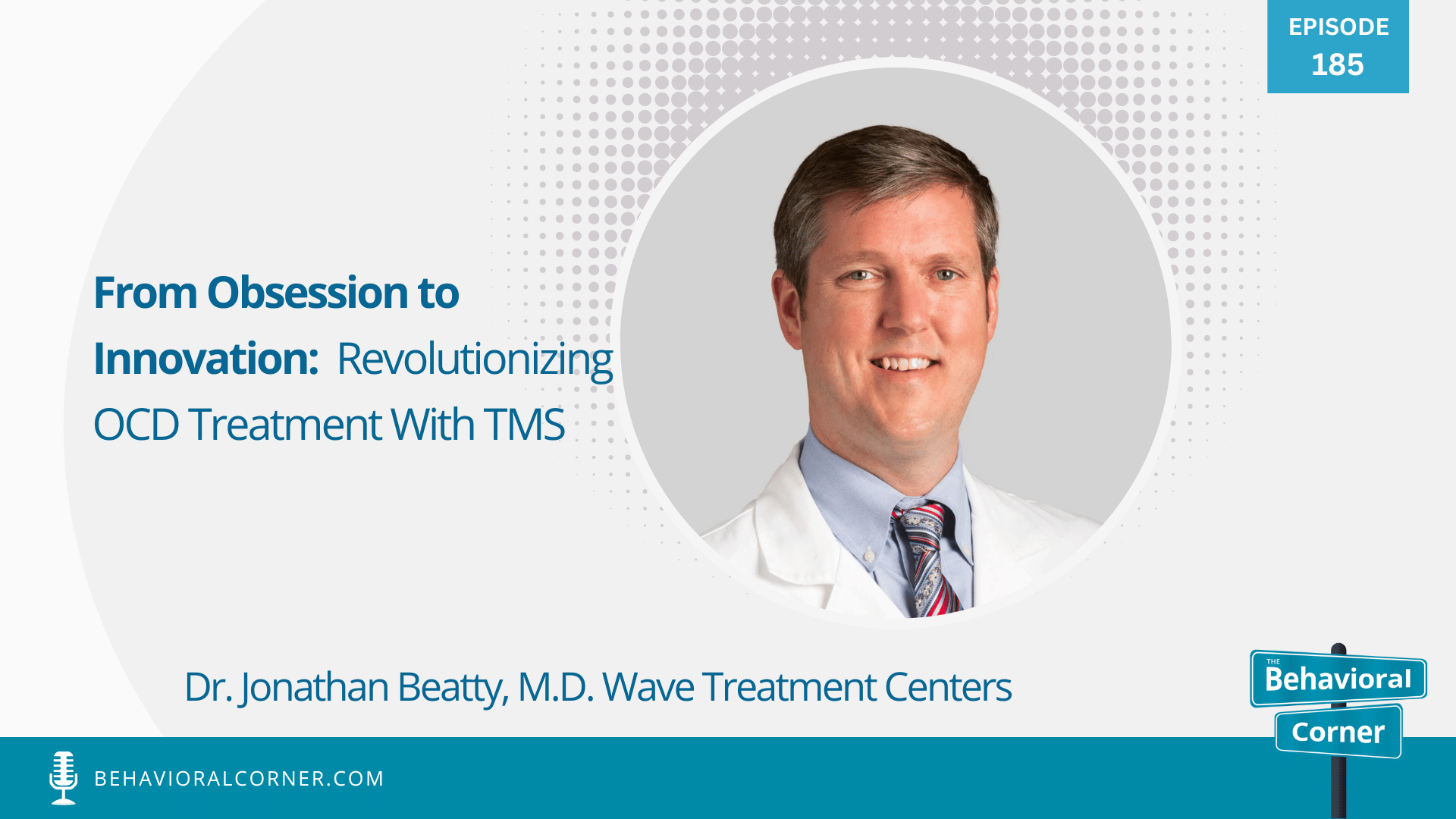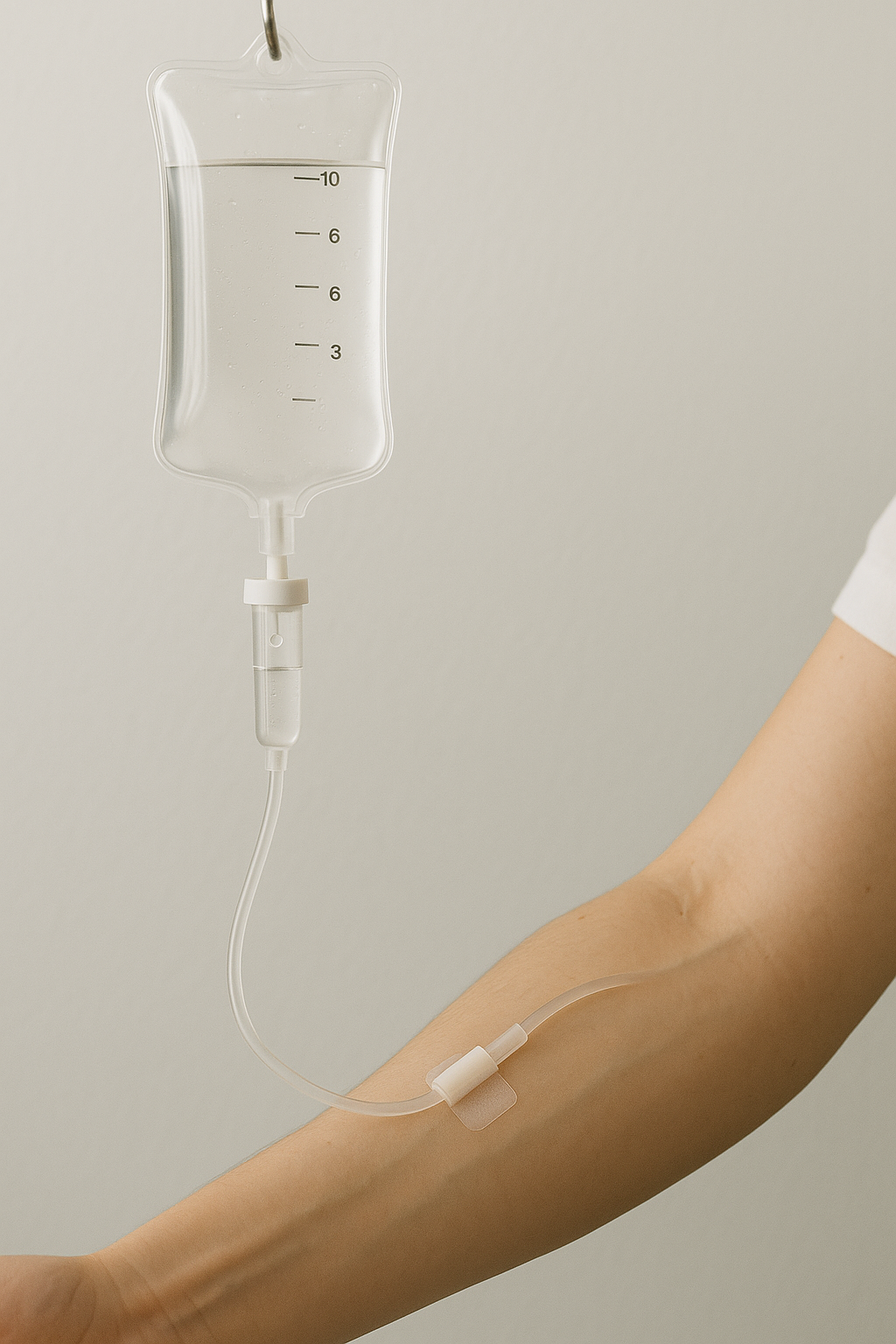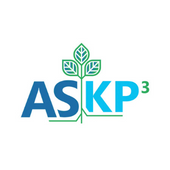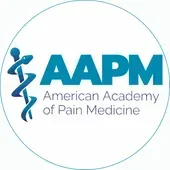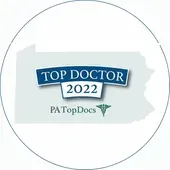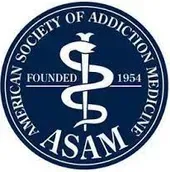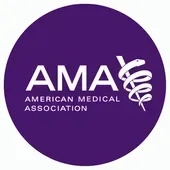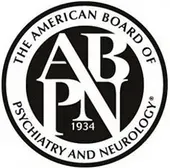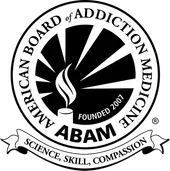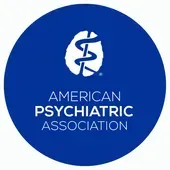Revolutionizing OCD Treatment With TMS with Dr. Jonathan Beatty
Wave Treatment Centers
Revolutionizing OCD Treatment With TMS with Dr. Jonathan Beatty
This week on the next Corner, Steve Martorano hosts Dr. Jonathan Beatty, the visionary behind Wave Treatment Centers, as they delve into the latest breakthroughs in treating Obsessive-Compulsive Disorder (OCD) with Transcranial Magnetic Stimulation (TMS). Their conversation illuminates the profound impact of these advancements, providing optimism and fresh opportunities for those grappling with OCD.
The Behavioral Corner
Hi, and welcome. I'm Steve Martorano, and this is the Behavioral Corner. You're invited to hang with us as we discuss how we live today, the choices we make, what we do, and how they affect our health and well-being. So you're on the corner, the Behavioral Corner. Please hang around for a while.
Steve Martorano
Hi, everybody. Welcome to the Behavioral Corner. It's me again, Steve Martorano, hanging here on a podcast that we described as being about everything because everything winds up affecting our behavioral health, well made possible by our underwriting partners, of course, the good people at Retreat Behavioral Health, you'll hear more about them down the road. First, we want to welcome back to the program, a friend of the program and a frequent contributor, Dr. Jonathan Beatty. Jonathan is the founder of the Wave Treatment Centers and we'll find out more about them straight ahead. He is board-certified in psychiatry, pain medicine, and addiction medicine. So he covered the waterfront here on both addiction problems and mental disorders. We're going to take a look at one specifically, which you probably have heard of, and think you know, something about I know I thought I did, but I'm learning every day. And that's obsessive-compulsive disorder. You know, the old cliches people washing their hands, opening the door, closing the door. We're going to find out all about that and some of the leading techniques now that Jonathan can share with us on how they're treating obsessive-compulsive disorder. So welcome again to the program. Dr. Beatty.
Dr. Jonathan Beatty
Thank you, Steve. It's good to be here. And if I may, I just want to on a little bit of a somber note, kind of dedicate this interview to a close family friend and mentor who I just learned passed away this week. Dr. Imtiaz Ahmad. He was a family friend and also a cardiothoracic and vascular surgeon. He was a pioneer in his field. And he was just a really dynamic individual. He was an incredibly well-educated, learned person who studied everything. He was a renaissance man in the truest sense, and just had a passion for learning and helped me develop a similar passion. And so I was very saddened to find out yesterday that he had died. And I just wanted to dedicate this to him in his memory.
Steve Martorano
Well, our condolences, of course, we're sorry to hear that you've lost a friend and a mentor. Anyway, let's talk about the Wave Centers right off the bat for people who might not know you, you are among the many techniques that you employ and treat all the issues that we've talked about. I guess the specialty at the wave centers is TMS, what is TMS?
Dr. Jonathan Beatty
Yes, so TMS stands for transcranial magnetic stimulation. And what that means is transcranial meaning through the cranium or the skull, and magnetic meaning it's a magnetic field. So there's a pulse, a tile magnetic field, which is able to make its way through the scalp, skin, through the bone, and into the brain. So you're able to actually influence the way that the brain signals itself from different circuits in the brain. And it does that through these through these magnetic pulses. And so there are different target locations for different types of treatment, different parts of the brain that is that we identify and then different pulse patterns, depending on what it is that we're trying to treat.
Steve Martorano
Yeah, it's amazing to think of all that's a pretty thick structure that those waves are getting through. And this is, this sounds like the least invasive technique that you can imagine when dealing with our brains. So TMS is about rewiring the electrical circuits in our brain with specificity towards certain parts of the brain, and what sort of things are treated effectively or indicated for treatment with TMS?
Dr. Jonathan Beatty
It's interesting because I think we're just scratching the surface, which is what's exciting about TMS as to what it can do. But to answer your question, and I guess to bring up the point you made, right, it's getting it's the magnet is penetrating through those structures to get into the brain. It's limited to some extent as to how much depth into the brain it can go and one of the things that has become more understood in the recent past is this brain circuitry and understanding that there are different parts of the brain that communicate with other parts of the brain, different neural networks. And some of those are superficial but they communicate with deeper structures in the brain. And so the location of treatment can be a superficial part of the brain meaning close to the surface, but it's able to then connect packed with deeper structures. And so to answer your question of what is currently available, there are so-called on-label device uses an off-label device uses. But in the present there are several FDA indications one is probably the most common would be major depressive disorder has very good results for that obsessive compulsive disorder. We'll talk a little more about that as the focal point of today. Anxiety and angst and anxious depression. Those are three big ones, there is a smoking cessation protocol. Interestingly enough, there's a migraine headache protocol. And they are looking into whether there are some neuropsychiatric benefits, or benefits for those types of conditions such as Parkinson's, and certain dementia, there's a little debate about that, because as the brain is kind of aging, or there's a lot of a lot to be understood about what's happening in those types of disorders. But stimulating the brain this neuro-modulation seems to at least help some aspect of that. And it's probably, perhaps a nomenclature that we will redefine over time, meaning that what we see as depression might be a brain disorder that somebody else might see as a component of a movement disorder, which is more obvious because you can see it, or an anxiety disorder or a memory problem. So all these different parts of the brain, I think, manifest symptoms that we cluster together, and we call those particular disorders. But I suspect over time, as we identify these brain circuits, in better form, we'll have a new set of diagnoses that will better fit what we're targeting and treating.
Steve Martorano
I want to get into what a typical TMS session would look like. But before that just occurs to me when you talk about the neural circuitry in the brain. This is a complete sidebar, as they make these leaps, these exponential leaps in the development of artificial intelligence, as I understand it, from a very layperson perspective, is that these neural networks that that they're creating with algorithms, are really just trying to replicate the way the human brain works. Which is a remarkable thing. I mean, the synapses are snapping all the time, and the brain is communicating to different parts of the brain simultaneously. I'm wondering if down the road, we won't have depressed, artificial intelligence machines. So you don't I mean?
Dr. Jonathan Beatty
Yeah, that's a fascinating concept, actually. And I think I'm not in any real sense knowledgeable about AI, other than, you know, sort of in the general sense, I think that it's to some degree almost reverse engineered, meaning that it has the accessibility of all of the literature and all of the information that's out there that's online. And then it has the ability to identify a human's interaction with a computer and it can gauge based on that interaction, what's going on. I don't know how well it understands which parts of the brain are being activated, in that interaction with the computer with the AI. But it is an interesting point as it quotes, the machine learns, if it will learn the human condition, so to speak, which...
Steve Martorano
I don't see how...I don't see how it could avoid it. No way, if they feed these miss these programs, enough information, they want to arrive at a point where you're going to have a lot of very disturbed machines who need to talk to other machines, because...
Dr. Jonathan Beatty
Maybe they'll need TMS because that'll be a way to interface with the robots, right?
Steve Martorano
Maybe it'll be even easier to administer. Anyway. So... that's a real, just an interesting thought I have there then let's talk about a typical TMS visit, I mean, sitting in your office, correct?
Dr. Jonathan Beatty
Yes. So this is an office-based procedure, I think what's important to identify or at least understand and recognize that this is different from a pill or a talk therapy, this is, an actual procedure that's accessing a particular part of your brain. So it's very targeted and specific, as opposed to a medication that goes throughout the entire body, and some piece of it goes to the part that you're hoping it will. So, basically, if I use my handy brain here, the process there's a there's chair that you sit in, and the stimulator is, is right next to that with these coils, the different types of magnetic coils, and depending on what you're doing, so the initial session is what we call a brain mapping procedure. And the way we deal with that is this kind of...I don't know if you can see it,
Steve Martorano
Hold it up a little higher. Yeah, yeah.
Dr. Jonathan Beatty
Yeah, that's it. That's the primary motor strip. So that's the part of your brain that controls your movement. So there's a different part of your brain that kind of converts a thought like, let me raise my hand into the action of that. So that's more a deeper structure the basal ganglia, but the actual motor aspect of it is this part of the brain and so we can see a movement, we can't see an emotion. So we can, but what we know is that the way a brain communicates for initiating a movement, is the same signal strength, if you want to call it that, as it would be to alter an emotional state. So we can see a thumb twitch easily. So the left side of the brain controls the right side of the body. So we take a different coil, not the treatment coil, but I'm choosing my fist as if it were the coil, we placed that basically in an area near will on or over the part that controls hand movements. And then we look for a little thumb twitch, the abductor pollicis, longus, and brevis those muscles that control the abduction of your thumb when we identify that first by finding it, and then we adjust the strength of the magnetic force or field and we continue to lower that strength until we get the bare minimum. And then we know that's the exact strength that your brain needs to depolarize to make...
Steve Martorano
That's sort of calibrating the machine?
Dr. Jonathan Beatty
Right or identifying, we're really the location writing it to your specific physiology, you as the individual patient getting the treatment. So once we know that number, it doesn't matter what the number is, I mean, it matters clinically, but in our conversation, it doesn't matter, we get that number, and then we typically treat at 120% of that number in a different location, depending on the condition, so for depression, or anxiety, it would be 120%. The reason or the perceived reason for that is there is as we move forward, as we age, there is sometimes some cerebral atrophy. So we want to get a little bit deeper than that. So we might need a little bit more than 100% or so we got 120. So we use a different coil, that's a treatment coil, and we move that by anatomical landmarks, because of EGS, there have been probably millions and millions of EEG, so we have a ton of clinical data about the average skull size and where these different parts are. So there's an anatomical EEG coordinate called F three. And so we use a combination of measurements and calculations to identify a part of the dorsal lateral prefrontal cortex on that left side. That's where we move the treatment coil. And that's where we place it.
Steve Martorano
Sounds like...it sounds like a very precise, it's...
Dr. Jonathan Beatty
Yeah, it's precision medicine, I mean, we're going to the exact target location that we want. And we're identifying the exact dose, if you will, that the patient needs.
Steve Martorano
When I come in for a session, who is it...are you providing the technique? Are you doing the technique or their technician's hands at work?
Dr. Jonathan Beatty
It's a little of both. So the part I just outlined, that's a physician-driven or at least a provider-driven protocol. And so that's kind of the medical aspect of it. And then there's, once you've identified that, and we also give you a treatment cap, so each patient gets their own sort of like a shower cap, but it's made out of cloth, we can mark that cap with all these different landmarks. And that gives us the opportunity to...I actually have somewhere around here. And so these are the treatment caps. And they are, each patient gets their own, and then we keep those for the daily treatments. So once the technician can put the cap on and know that they're going to hit the same location every time that the physician or the PA is marked. And then they can give that treatment, it's a daily treatment. So depending on the protocol, anywhere from three minutes to 30 minutes, let's say, depending on if there's more than one protocol, and that's typically 30 to 36 sessions. So they come in often Monday through Friday, at least four days a week, if not five days a week, times six weeks gives you the 30 sessions, and then we kind of taper off from there.
Steve Martorano
So what's the sensation?
Dr. Jonathan Beatty
A lot of people describe it as a woodpecker, interestingly enough, not that they feel actual physical pain, but they just don't know what else to compare it to. And because it's pulsatile it is. It's not like it's tapping your brain. I mean, it's it's really the magnetic, the magnets going in and out hitting the housing...the coil housing, so you hear like a little bit of a tapping, but it's not actually like pushing you or it but you because of that magnetic pulse, you feel sort of a little bit of a stimulation there. And so it's typically not uncomfortable, should never be painful, because there's really nothing else like it. It's just an unusual experience. But...
Steve Martorano
Are there any drugs involved in this?
Dr. Jonathan Beatty
Not at all the biggest but also the rarest risk is there's probably about a one in 100,000. Or let's even say if it's one in 10,000, although it's often cited as one and 100,000 patient risk of a seizure, and that would be a self-limited seizure, meaning it would stop on its own and that you would not then have seizures from that point forward. But that's it...we do a very careful screening to make sure that you don't have a history of seizures. You don't have anything implanted in your head. If you're a war veteran and you have shrapnel in your head that could heat up from the magnet, if you had any sort of surgical implants that were done or cochlear implants that were done, those would be well, cochlear implants would be a contraindication. But metal clips depending on what they are, most things are magnetic safe, now they're titanium. So those are not necessarily a contraindication. But they could be so we screened for all of that. Again, that's all part of the medical evaluation. And, then we get you situated in the chair and you know, go through that process, like I said, a brain mapping and then the actual procedure, you're wide awake, there are no medications, you could theoretically read a newspaper, although more commonly we interact with the patient and try to identify how they're doing. We also before starting ask them a few screening questions each day about their sleep habits, their medication habits, their drinking habits, any changes in moods, and so forth. And then we also measure their their moods through rating scales at periodic intervals. And that's how we help drive the protocol decisions. If we need to change something, increase the number of pulses at another location, those sorts of things.
Steve Martorano
Our guest is Dr. Jonathan Beatty, he is the founder of the Wave Treatment Centers, talking about the broad use of TMS. And now to talk about one of the things that caught our attention here, why we reach out to you, you've mentioned that this is a very precise procedure that can treat a number of mood disorders. And you've had some success now with, I guess, a new piece of equipment on the machine so that you can treat obsessive-compulsive disorders. If you can give us just a quick thumbnail. When we talk about OCD, what are we talking about?
Dr. Jonathan Beatty
So obsessive compulsive disorder is basically a combination of those first two words. So an obsessive thought is something that is repetitive, that you can't do you have frequently over and over again, and you may not have any control over it. In some of the older kinds of Freudian literature, they would refer to either ego-syntonic, or ego-dystonic type of obsessions, and what those mean and kind of present-day is, are the obsessive thoughts troubling to you. Like, for example, it could be an obsessive thought that there are a lot of germs. A germ fear or infestation these kinds of things are sometimes one of the types that occur there, to some extent, distressing. And that can be very distressing. And there's often than a compulsive behavior, and we'll get into that next. But the obsessive thought could be some horrific thing, like thinking about somebody dying, or something that you would never actually think about in your own personality. But yet, you have this thought, and so it's very distressing or dystonic. And so that's what that means. So you have these obsessions that can happen throughout the day that can happen for multiple hours per day. And then there's often some type of compulsive behavior, which you typically will try to do in order to alleviate or, or reduce this distress. So the hand washing, I think you mentioned that we started that's a common one. So if you touch something, and you think that it's dirty, or that you're not contaminated this fear of contamination, you have to wash your hands. And you might have to wash your hands in a compulsive way, like, you might have to wash five times then soap again, then five more times, something like that. People have very various things like evening out, some people will call it so that they touch something on the left, they have to touch something on the right, they have to touch, you know, if they walk on a sidewalk and they walk on a crack, then they have to walk on a crack on the other foot like these sort of balancing things. So yeah, those kinds of things are just some basic examples of OCD. I want to quickly differentiate that as a pathology to what a lot of people are sort of colloquially referred to as OCD, right? So like, Okay, I have OCD. So I need to like wash my hands or something that's not really what we're talking about. This is a much more severe level an in the most extreme sense. People might have raw skin because they've washed their hands so much, or even burns because they needed to use such hot water. So that's, it's really a much more severe thing than just, you know, a low-level type of distress.
Steve Martorano
Yeah, or certainly not. It's certainly not, you know, Hollywood has a tendency to take diseases and make them Hollywood diseases where, you know, people never seem to lose weight when they're ill. And, you know, there's been depictions of people with obsessive-compulsive disorders that make it seem like it's kind of quirky. That's all. We're not talking about quirky, we're talking about behavior that can ruin not ruin but certainly distributed life.
Dr. Jonathan Beatty
Generally speaking, yes. Now there is actually a differentiation to something called obsessive-compulsive personality disorder, which depending on the level of severity might be more like what you're talking about, which is a little bit more quirky, a little bit less flexible. And so yeah, people are like, Oh, well, he just, you know, can't or she can't just adjust to something on the fly. They need it to be, you know, that's a little bit different.
Steve Martorano
But it's not paralyzing...it's not paralyzing in it's impact.
Dr. Jonathan Beatty
The best example I can think of in relatively modern cinema would be As Good As It Gets with Jack Nicholson. Great job. If anybody hasn't seen that you should watch it. It really does depict OCD very well.
Steve Martorano
Yeah. Tony Shalhoub, the actor, the terrific actor has a series.
Dr. Jonathan Beatty
Yes, Monk. Yeah.
Steve Martorano
And he does a pretty good job with it. So tell us now, oh, by the way, how common is OCD?
Dr. Jonathan Beatty
I don't have a statistic on you. I should have looked that up for you rather ahead. I mean, I think that it's relatively common among psychiatric diagnoses. So that's obviously a selection bias. People coming to see me have already been troubled by whatever's going on in order to come see me. So in the general population, obviously, that would dilute that frequency quite a bit. But I mean, I think it's among, you know, the more the more common disorders, I would say. But I don't want to misquote an exact number.
Steve Martorano
Jonathan, what's new about what you guys are doing at the Wave Centers?
Dr. Jonathan Beatty
Sure. So the OCD protocol uses a slightly different coil, a magnetic coil. So we have a different ad that was more recently approved by the FDA or cleared by the FDA to be used for treating OCD. And so the target is different. And the...so that motor threshold that I described, for thumb Twitch, instead, we use a more central towards the vertex, which was the top of the brain part of stimulation for the motor threshold of a toe, we look for a toe twitch actually. So we have patients take their shoe off for that one visit in order to look carefully at their toe as it and then we identify the same strength, same process, and then we're treating a deeper structure. So we need to increase the intensity. So we that's one of the reasons that the magnetic coil is a different coil is that it has the capability of penetrating deeper down into into the it's still a relatively anterior approach. It's more or less the dorsal medial prefrontal cortex, it's the location. And other than that, it's basically the same one other differences. I mean, the protocol is basically the same, it's it's 100% of the motor threshold, rather than 120% the number of treatments the the number of pulses are a little bit different than what they call it. So a series of pulses is called a train. So if you have five or 10, or 15 of these pulses, then there's an interval between them called the inter-train interval, it's a much longer inter-train interval for that protocol. I mean, these are kind of, you know, not that interesting, probably in a conversation, but they're they have clinical relevance.
Steve Martorano
And the...and the processes are the same six weeks?
Dr. Jonathan Beatty
Exactly. Yeah, exactly. It's, it can be a little shorter sometimes for the OCD, but typically, it's about the same number of sessions.
Steve Martorano
And then just as follow up on on treatment, while this is going on, while the 30 to 36...
Dr. Jonathan Beatty
30 to 30 treatments, yeah.
Steve Martorano
Is there any we've mentioned, you've mentioned that there are no drugs during that process. Is there a component of talk therapy that also goes on during the sessions?
Dr. Jonathan Beatty
Yes, and actually, I should just back up to clarify that although this treatment and this procedure don't require or don't involve medications, the typical patient that we're seeing has already not responded to a number of medications. And that's, that's sort of refractory disorder in that sense that it hasn't responded to, depending on which insurance company you're talking to, or how you define it in the literature, anywhere from two well, Medicare actually one but one medicine but usually two to four medications for that condition. So SSRIs are the most common there are a couple of TCAS that are associated with tricyclic antidepressants these are the meds that are most commonly used to treat OCD, similar medicines to treat depression and anxiety and they are often ineffective at treating OCD. So this is kind of a more robust treatment for it. Talk therapy that they may have not responded well to talk therapy or psychotherapy as another indicator of why they need OCD. Whether or not you incorporate psychotherapy into the TMS sessions, we try at least at a minimum to provide some sort of supportive psychotherapy. So depending on whether there's a clinician present and versus a technician present, obviously a technician doesn't have the level of psychotherapy training that a clinician has. But on some level, there's obviously a supportive element to this and trying to understand kind of in? Well, since we're talking about the OCD, what are the obsessions? What are the compulsions? And then how are they affecting you? And how are they improving? Hopefully?
Steve Martorano
Yeah. Pretty good. Particularly that last point, obviously, it's inheriting the whole thing is when you know, they show up and how you do it. Right. Yeah. And this final question on OCD strikes me that it might be common or not so uncommon, anyway, that people don't recognize they have a problem with this kind of behavior and I would guess they get to you and other people say to them, you know, you, you got to, you got to find out what's going on here. You, you know, you're doing some stuff that is very peculiar. In other words, do people know they have this disorder?
Dr. Jonathan Beatty
I think that is not always, I mean, there's definitely a subset of patients with any psychiatric condition where they're just like, thought that was normal. And then somebody described it, or I've had situations where somebody has talked to a friend even or somebody else that and that friend maybe got diagnosed with it and had this distress over it, got the diagnosis, got the treatment, and was explaining it and then the soon to the patient was like, that I have that same thing going on and come to find that it is something like OCD or, or it's one that's, you know, if you're depressed, it's usually a little more obvious maybe, if you have obsessive thoughts, and the compulsions are also thoughts rather than actions, then it's not as obvious I mean, you can see somebody washing their hands 10 times a day and be like, that's something's going on there. Let's ask what that is. One of the things that's helpful, I just wanted to bring up there's, I mentioned rating scales, there's one called the Y-BOCS, the Yale-Brown, Obsessive Compulsive Scale. That's a kind of industry-standard rating scale. It's well tested, normalized across populations, and so forth. And by the way, I did quickly just glance, I think one in 40 adults in the United States can be diagnosed potentially, or have OCD. So it's pretty common.
Steve Martorano
Pretty common.
Dr. Jonathan Beatty
I won't go through this whole thing in detail, but on a cursory level, this symptom checklist breaks down the obsessions into aggressive obsessions, contamination obsessions, sexual obsessions, hoarding and saving obsessions, religious obsessions, obsessions with the need for symmetry or exactness and miscellaneous. Also somatic or body experience cleaning and...I'm sorry and then compulsions there are cleaning and washing compulsions, checking compulsions, like having to check the door a certain number of times or the lock and you know the handle whatever, rituals counting compulsions, ordering and arranging compulsions, hoarding and collecting compulsions, and miscellaneous and you know
Steve Martorano
And what's the name of that... that scale?
Dr. Jonathan Beatty
That's the Y-dash-BOC and that's the Yale-Brown, obsessive-compulsive scale.
Steve Martorano
Dr. Dr. Bailey thanks so much. We appreciate this. Johnson Beatty, founder of the wave treatment centers, if you want more information about them. They have a terrific website. And you can check them out there. It's just what Wave Centers dot...
Dr. Jonathan Beatty
WaveTreatmentCenters.com. So W-A-V-E-TreatmentCenters.com.
Steve Martorano
Jonathan, thanks so much. If I don't see you before the holidays, have a great holiday, and hope you'll join us in the New Year as well.
Dr. Jonathan Beatty
That would be great. Steve, thanks so much. It's great speaking with you.
The Behavioral Corner
That's it for now. Make it a habit to hang out at the Behavioral Corner, and when we're not hanging out, follow us on Facebook, Instagram, and Twitter at the Behavioral Corner.
Schedule Your Consultation
Chestnut BLOG Form Submission

